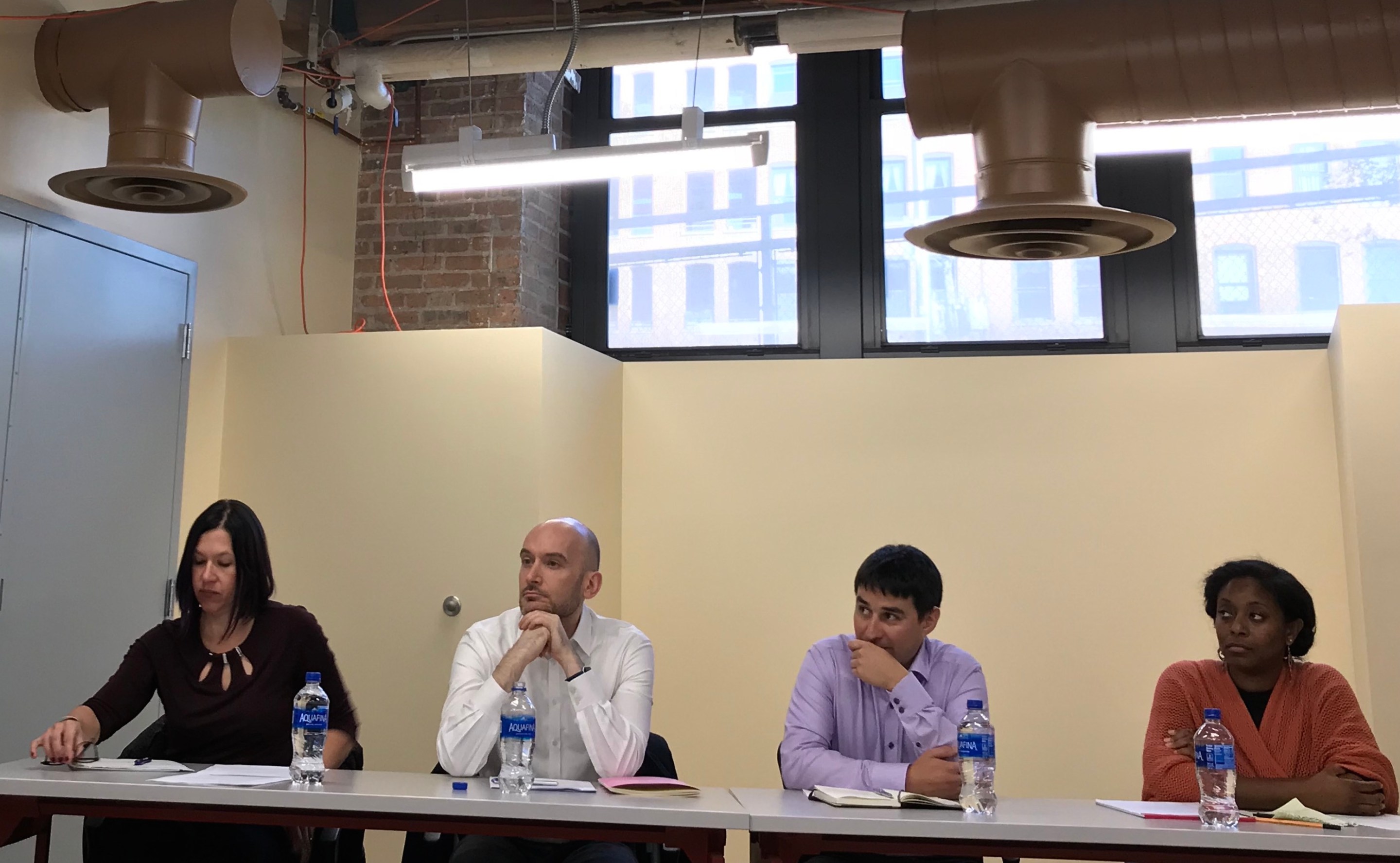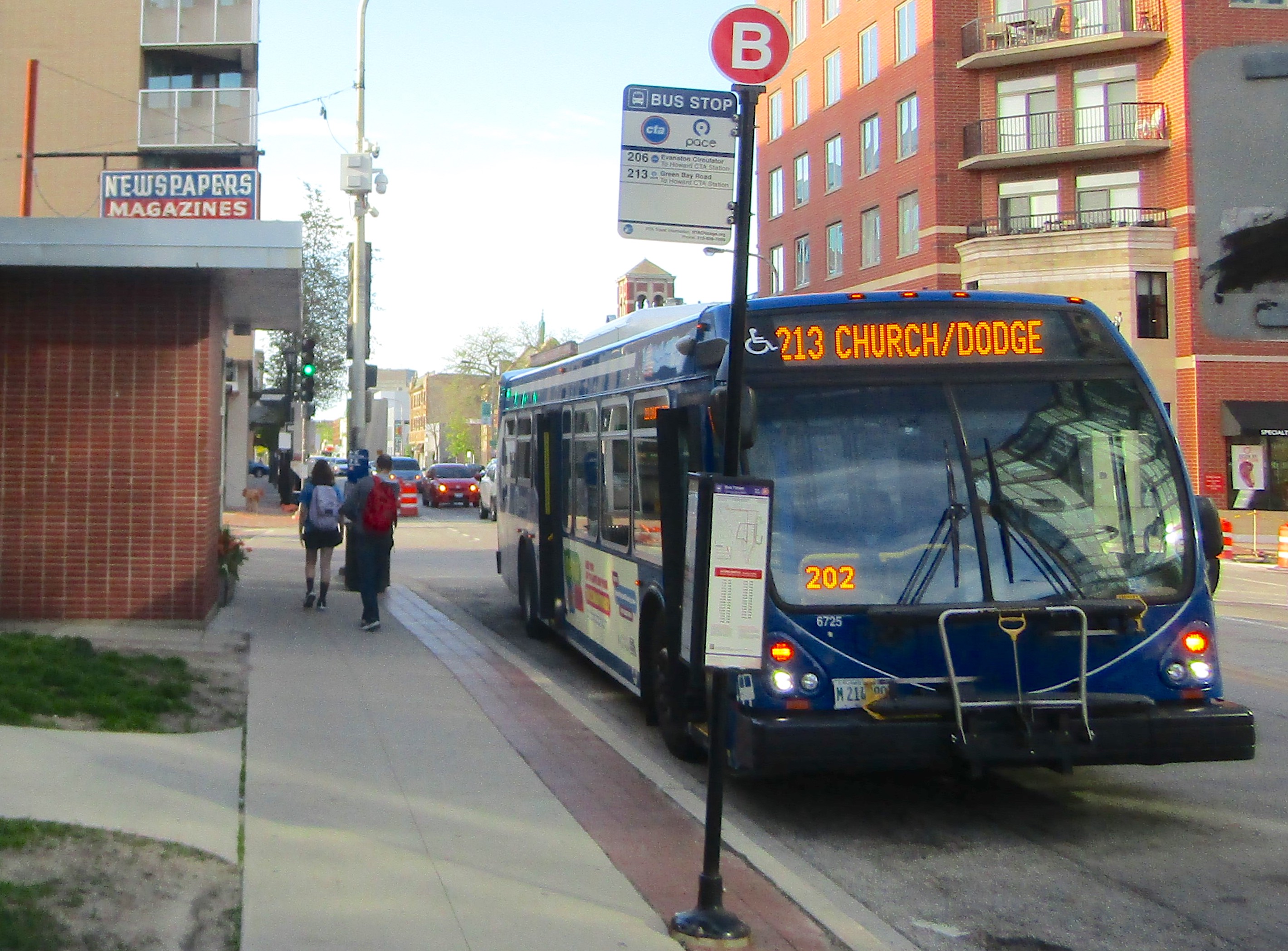The Diversity Committee of the American Planning Association's Illinois chapter co-hosted the second annual Equity in Planning panel on Thursday along with sponsors WTS Greater Chicago Chapter, UIC's College of Urban Planning and Public Affairs, UPPSA, The Society of Black Urban Planners, LPODER at UIC, and Women in Planning and Public Affairs.
This year’s panel focused on issues of diversity, equity, and inclusion in the field of transportation planning. The panel included Jesus Barajas, assistant professor at the University of Illinois at Urbana-Champaign, Roberto Requejo, program director for Elevated Chicago, and Audrey Wennink, director of transportation at the Metropolitan Planning Council. Moderating the panel was Katanya Raby, asssociate outreach planner for the Chicago Metropolitan Agency for Planning.
“How does equity shape your work and what do you think are barriers for inclusion in urban planning?” Raby asked to kick off the discussion.
Barajas started off by describing his experience living in Los Angeles and seeing what kind of discussions were happening around bike lanes. “I didn’t see certain people represented in those conversations who should have been a part of them,” he said.
Requejo recalled going to the master’s program at UIC and first learning about racial equity efforts in Chicago. He spoke about his work with Elevated Chicago, a collaborative that promotes equitable transit-oriented development. Requejo said they’ve intentionally made their collaborative diverse in terms of race and gender, in addition to removing barriers to participation for parents with young children by offering daycare. “We want their voices to be included in these conversations,” Requejo said.
Wennink said that lack of gender diversity in the male-dominated transportation planning field had been an issue during much of her career, until she started at MPC, which is led by MarySue Barrett.
The next question Raby asked was about strategies to help ensure transit improvements, and the ensuing rise in property values, don't trigger displacement of low-income and working-class residents.
“We know people need investment, but we don’t want the investment to have negative impacts,” Wennink said. “We need to be very aware of this potential as planners.” She added that it's important to communicate to longtime residents that improvements are meant for them too, but it's also crucial to put in policies to preserve affordable housing, as well as to help people buy property before possible improvements occur.
Requejo noted that gentrification-fueled displacement is particularly obvious in Logan Square, which lost 20,000 Latino residents between 2000 and 2014. He also emphasized the need to talk about divestment-led displacement, the phenomenon of people fleeing under-resourced communities due to issues like lack of job opportunities and crime. “The city of Chicago continues to lose more of its African-American population,” he said. “It’s another type of displacement.”
The next question focused on funding and how to spur state and city governments to maintain and prioritize transit.
“One thing to think about is how we are using the money we have,” Wennink said. “The Jane Byrne Interchange Project is costing 700 million dollars. There’s a lot you can do for the region with that amount of money.” Wennink added that we need to think about the trade-offs we make when we adopt a solely auto-oriented model. “The most equitable thing we can do is fund walking, biking, and transit.”
Requejo challenged the idea that we don’t have enough money in the region. “There is a lot of money concentrated at the top,” he said. “We need to make sure our tax rate is progressive,” meaning that wealthier resident pay a larger percentage of their income in taxes than working- and middle-class people. Rejuejo added that we need to find creative ways to mix public, private, and philanthropic dollars.
Raby followed up with a question about law enforcement and its role in traffic safety, particularly given the recent controversy around police officers writing exponentially more bike tickets in some communities of color compared to majority-white neighborhoods.
“When you have a system where you are [over-]policing certain people, a message is sent that you’re not welcome,” Requejo said. “Economically, it is a disaster for Chicago. Ticketing is one sliver of a bigger pie of systemic racism.”
Wennink said that if the CPD's ticketing strategy was really about reducing traffic fatalities, there would be a greater focus on slowing down drivers, rather than targeting cyclists. (The CPD has acknowledged that the racially-skewed ticketing numbers are due to officers using bike enforcement as a pretext for searches in high-crime areas.)
Next the panelists were asked how urban planning, a profession that has historically been dominated by white males, could be diversified.
Requejo said it’s important to look at all phases and ages to address gaps in support, whether it be exposing kids to urban planning, mentoring college students in the field, or making sure a young professional of color has support at their place of employment. “You need to ask what corporations and organizations are doing to support diversity,” he said. “If there is no current commitment, I would choose another organization.”
Wennink said that as a transportation consultant she was often the only woman in a roomful of men. She credits WTS, an organization advancing women in transportation, as being a crucial source of support when she first got started.
Barajas said that transportation planning has historically been very engineer-focused, but that’s changing, which he believes will be helpful in diversifying the field. “Public institutions also have a responsibility, especially those that host urban planning programs,” Barajas said. He noted the University of Illinois at Urbana-Champaign’s recent commitment to provide free tuition for students with family incomes $61,000 and below.
To close out the panel, Raby asked panelists to define their vision for equity.
“We have racism embedded in every part of our society and we have to work to change it,” Wennink said. “In every institution we’re in, we need to create equity frameworks.”

Did you appreciate this post? Consider making a donation through our PublicGood site.





